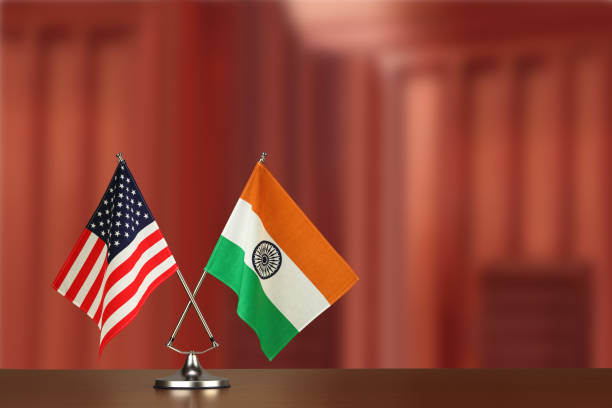India US Diplomatic Talks 2025
By Asmita - Aug 24, 2025
India's new Ambassador to the US, Vinay Mohan Kwatra, has intensified diplomatic efforts with 19 American lawmakers in just 15 days to address trade disputes and emphasize mutual benefits, aiming to maintain a balanced approach in negotiations. The engagements underscore India's strategic focus on economic interests amidst tensions and highlight the importance of bipartisan support for strong US-India relations.

studiocasper via Istock
Amid escalating tariff-related tensions between India and the ,[object Object],, New Delhi has intensified its diplomatic outreach in Washington. In an effort to mitigate potential friction and safeguard the growing economic partnership, ,[object Object],, Taranjit Singh Sandhu’s successor, ,[object Object],, has taken the lead in proactive engagement. Reports suggest that within a short span of just 15 days, Kwatra has successfully held discussions with 19 American lawmakers, spanning both the Republican and Democratic camps. The aim of these meetings is to present India’s perspective on trade disputes, highlight the mutual benefits of cooperation, and build support in Congress for a balanced approach in bilateral negotiations. This outreach signifies how India is carefully balancing its economic interests with political diplomacy at a time when the administration in Washington is under pressure to adopt a more assertive trade posture.
The US-India trade relationship has grown significantly over the last decade, with bilateral trade exceeding $190 billion in recent years. However, recurring disputes over tariffs, market access, and regulatory frameworks have continued to pose challenges. The recent trade friction stems from America’s demand for greater access in Indian markets, while India has raised objections to certain tariff policies it considers unfair. Ambassador Kwatra’s sharp focus on convincing lawmakers indicates that New Delhi is aware of how deeply Congress can influence US trade policy. By explaining India’s expectations and underlining the complementarities between the two economies, these meetings seek to prevent trade disagreements from overshadowing broader strategic priorities such as defense cooperation, technology partnerships, and geopolitical coordination in the Indo-Pacific region.
The frequency and number of Kwatra’s engagements reflect the seriousness with which India is approaching the matter. Holding 19 meetings in 15 days points to a targeted campaign rather than routine diplomacy. Senators and members of the House of Representatives are being briefed not just on tariff issues, but also on how economic stability supports overall bilateral ties. Sources indicate that conversations covered multiple sectors like agriculture, pharmaceuticals, information technology, and energy. The ambassador reportedly emphasized that punitive tariffs or restrictive policies would hurt businesses on both sides, including American exporters who have steadily increased their presence in the Indian market. Moreover, he outlined India’s commitment toward global rules-based trade and willingness to resolve differences through dialogue instead of confrontation.
These meetings are also being seen as part of a broader strategy to maintain bipartisan support for strong India-US relations despite occasional frictions. In Washington’s political environment, where multiple lobbies continuously seek influence, India’s engagement with legislators adds a crucial voice to the ongoing debate. Analysts believe that such outreach helps keep India’s concerns visible on Capitol Hill and prevents policy decisions from being shaped only by short-term commercial disputes. Additionally, by strengthening relationship-building at the congressional level, India ensures that its position is heard irrespective of changes in the executive branch. The effort indicates recognition that trade disputes, if left unchecked, can spill over into security or strategic cooperation, something both nations would like to avoid in view of regional competition and global uncertainty.


